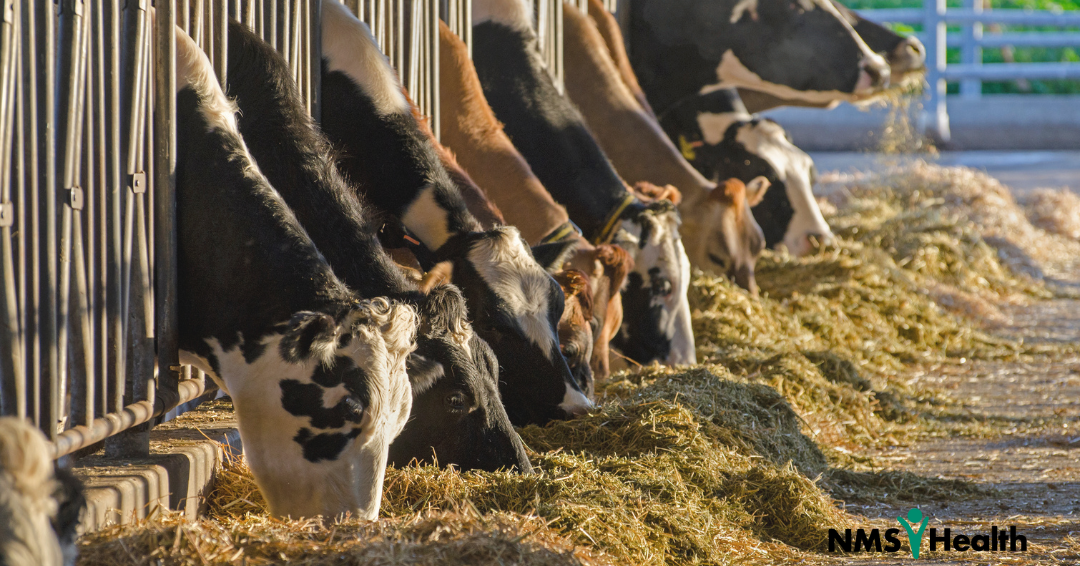Recent outbreaks of H5N1 bird flu on dairy farms have exposed farmworkers to significant health risks. In response, the Centers for Disease Control and Prevention (CDC) is calling for stricter use of personal protective equipment (PPE) to protect workers from potential transmission. A new study highlights the critical role of PPE in reducing exposure during such outbreaks.
The Risk of H5N1 on Dairy Farms
While bird flu is commonly associated with poultry, recent cases have shown that dairy farmworkers are also at risk. Workers are particularly vulnerable when it comes to contact with infected cows or their raw milk. Exposure to secretions such as saliva, respiratory droplets, or manure can lead to severe health issues, underscoring the importance of PPE as a safeguard.
Worker Practices and PPE Use During Outbreaks
In collaboration with the Colorado Department of Agriculture, the Colorado Department of Public Health and Environment took proactive measures by supplying personal protective equipment (PPE) to all farms before and during reported outbreaks this year. Researchers interviewed 83 workers across three Colorado dairy farms where H5N1 cases were confirmed in cattle. Conducted approximately 48 days after outbreaks were reported, the study revealed critical data about the availability and use of PPE among farmworkers:
- Increased PPE Use: PPE usage rose by 28% after the outbreak was detected, with eye protection seeing the most significant increase (up 40%).
- Availability: Before outbreaks, gloves were the most accessible PPE (88%), followed by eye protection (76%), rubber boots (71%), and head covers (69%). However, only 26% of workers used N95 respirators.
The proactive distribution of PPE by state health and agriculture departments played a key role in enabling workers to protect themselves.
High-Risk Tasks and Reduced Work Duties
The study identified common work activities and their associated risks:
- Frequent Tasks: Milking cows (51%), cleaning manure (49%), and transporting cows (46%).
- High-Risk Activities: Tasks such as milking expose workers to raw milk and secretions. Additionally, manure handling and animal transport increase the risk of contact with contaminated materials.
Following the detection of H5N1, workers reduced their range of duties from a median of five tasks to three, reflecting efforts to limit exposure.
Why PPE Is Essential for H5N1 Prevention
H5N1 primarily spreads through direct contact with infected animals or their secretions. While measures such as improved ventilation and hygiene protocols reduce risk, PPE serves as the last line of defense. Proper PPE use helps prevent:
- Inhalation of virus-laden droplets.
- Contact with contaminated skin or eyes.
- Spread of the virus via hair or clothing.
CDC Guidelines for Stricter PPE Use
To minimize risks, the CDC recommends the following stricter PPE use guidelines for workers in high- and medium-exposure settings:
- High-Exposure: NIOSH-approved respirators, fluid-resistant coveralls, goggles or face shields, gloves, boots, and head covers.
- Medium-Exposure: NIOSH-approved respirators, safety goggles, and disposable gloves.
Training workers on the correct use, cleaning, and disposal of PPE is crucial to ensure its effectiveness.
Proactive Measures to Strengthen Safety
The CDC emphasizes that early preparation is key to managing H5N1 risks. Farms that equip staff with PPE and provide thorough training are better positioned to protect workers and limit virus transmission.
“Public health agencies should continue to conduct outreach to farms and educate farm owners about the importance of workers using PPE during farm duties and exposure to ill cows, as well as understanding and reporting signs of human illness during A(H5N1) herd outbreaks,” the CDC states. “Collaboration with state agricultural partners can strengthen relationships and public health practice at dairy farms.”
To further mitigate risks, the CDC recommends:
- Ensuring a steady supply of PPE before outbreaks occur.
- Providing training on proper PPE use and the importance of compliance.
- Partnering with public health agencies for resources and ongoing support.
“As the A(H5N1) outbreak in dairy herds evolves, providing PPE to farms before outbreaks occur might help increase PPE use, especially during high-risk activities such as milking, and prevent human cases of A(H5N1),” the CDC adds.
Ready to elevate your workforce’s health? Partner with NMS Health for your occupational health screenings and vaccinations. With NMS Health, you are not just identifying and preventing future illness; you’re investing in a safer, healthier future for your team. Get started today!


